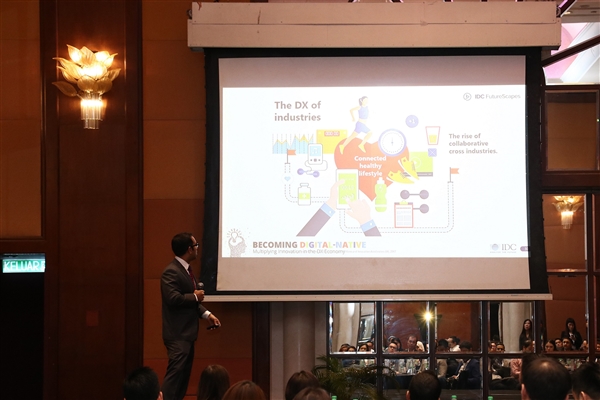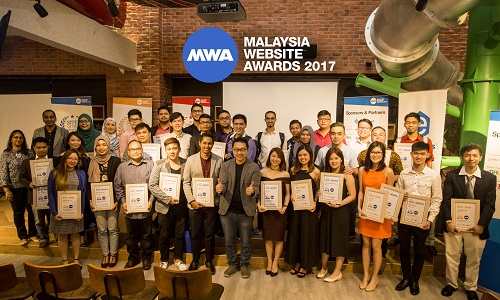International Data Corporation (IDC) ASEAN announced the top ten technology predictions for 2018 and beyond at IDC Malaysia FutureScape event held at Sheraton Imperial Hotel, Kuala Lumpur.

The event themed “Becoming Digital-Native in the Malaysian Digital Economy” highlighted the technology trends and key imperatives that will impact the strategic decisions of business leaders as DX attains macroeconomic scale in Malaysia.
IDC C-Suite survey reveals that 2 out of 3 Malaysian organizations are either planning their DX strategy or are actively implementing related projects to maximize their business benefits. As Malaysia strides towards embracing digital economy, IDC urges local enterprises to scale up and accelerate innovation as emerging technology trends are set to redefine IT and businesses in Malaysia over the next three years.
“In order to be able to lead in a fully-scaled DX economy, organizations must become digital native enterprises (DNE). The digital-native enterprise is able to scale its business and innovate at a pace that is an order of magnitude greater than traditional businesses. New technologies should be adopted as business benefits become more obvious and clear. The technology predictions for this year provide insights for business leaders to achieve their business goals in a competitive digital ecosystem,” said Pranabesh Nath, Research Director, IDC Malaysia.
Speaking at the event, Sudev Bangah, Managing Director of IDC ASEAN said, “Innovation will continue to disrupt every industry and business leader should focus on technologies that enables business outcomes. Digital transformation (DX) should be placed as the core strategy and organizations should accelerate the DX pace to thrive in the competitive digital ecosystem. In the DX economy, the interdependence of digital transformation, 3rd Platform, and IT leadership are the key for business success.”
The IDC Malaysia FutureScape 2018 predictions primarily focus on the four pillar technology areas; Cloud, Mobility, Social and Big Data and analytics as well as six innovation accelerators; Augmented and Virtual Reality (AR/VR), Cognitive/AI System, Next-Gen Security, Internet of Things (IoT), 3D Printing and Robotics.
According to Pranabesh Nath , the top predictions that will make the biggest impact to organizations in the country for 2018 and beyond are:
1. Digital economy tipping point: By 2021, at least 20% of Malaysia GDP will be digitized, with growth in every industry driven by digitally-enhanced offerings, operations and relationships; by 2020, investors will use platform/ecosystem, data value, and customer engagement metrics as valuation factors for all enterprises.
2. DX platforms: By 2020, 28% of all enterprises in Malaysia will have fully articulated an organization-wide digital transformation (DX) platform strategy and will be in the process of implementing that strategy as the new IT core for competing in the digital economy.
3. Cloud 2.0: Distributed and specialized: By 2021, Malaysian enterprise spending on cloud services and cloud-enabling hardware, software and services will reach US$621 million, leveraging the diversifying cloud environment that is 15% at the edge, over 20% specialized (non-x86) compute, and 50% multicloud.
4. AI everywhere: By 2019, 30% of digital transformation initiatives in Malaysia will use AI services; by 2021, 50% of commercial enterprise apps will use AI, over 20% of consumers will interact with customer support bots, and over 20% of new industrial robots will leverage AI.
5. Hyperagile apps: By 2021, Malaysian enterprise apps will shift toward hyper-agile architectures, with 50% of new application development on cloud platforms (PaaS) using microservices and cloud functions (e.g., AWS Lambda, Azure Functions), and over 40% of new microservices deployed in containers (e.g., Docker).
6. HD interfaces: By 2020, human-digital (HD) interfaces will diversify in Malaysia, as 15% of field-service techs and over 15% of infoworkers use augmented reality, nearly 20% of new mobile apps use voice as a primary interface and 15% of consumer-facing M1000 use biometric sensors to personalize experiences.
7. Blockchain and digital trust: By 2021, at least 10% of Malaysian enterprises will use blockchain services as a foundation for digital trust at scale; by 2020, 20% of banks, 10% of supply-chain and 5% of healthcare organizations will use blockchain networks in production.
8. Everyone a data provider: By 2020, 15% of Malaysian enterprises will generate revenue from data-as-a-service – from the sale of raw data, derived metrics, insights, and recommendations – up from virtually 0% in 2017.
9. Everyone a developer: Improvements in simple (“low-/no-code”) development tools will dramatically expand the number of non-tech developers over the next 36 months in Malaysia; by 2021, these nontraditional developers will build 20% of business applications and 30% of new application features (60% by 2027).
10. Open API ecosystems: By 2021, more than quarter of Malaysian enterprises will see an average of 15% of their digital services interactions come through their open API ecosystems, up from virtually 0% in 2017 – amplifying their digital reach far beyond their own customer interactions.











